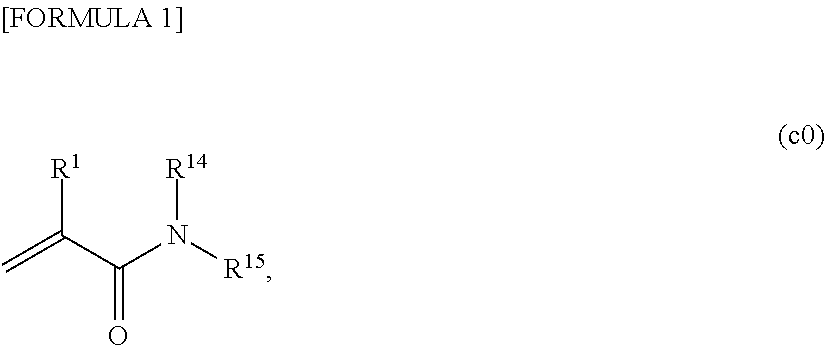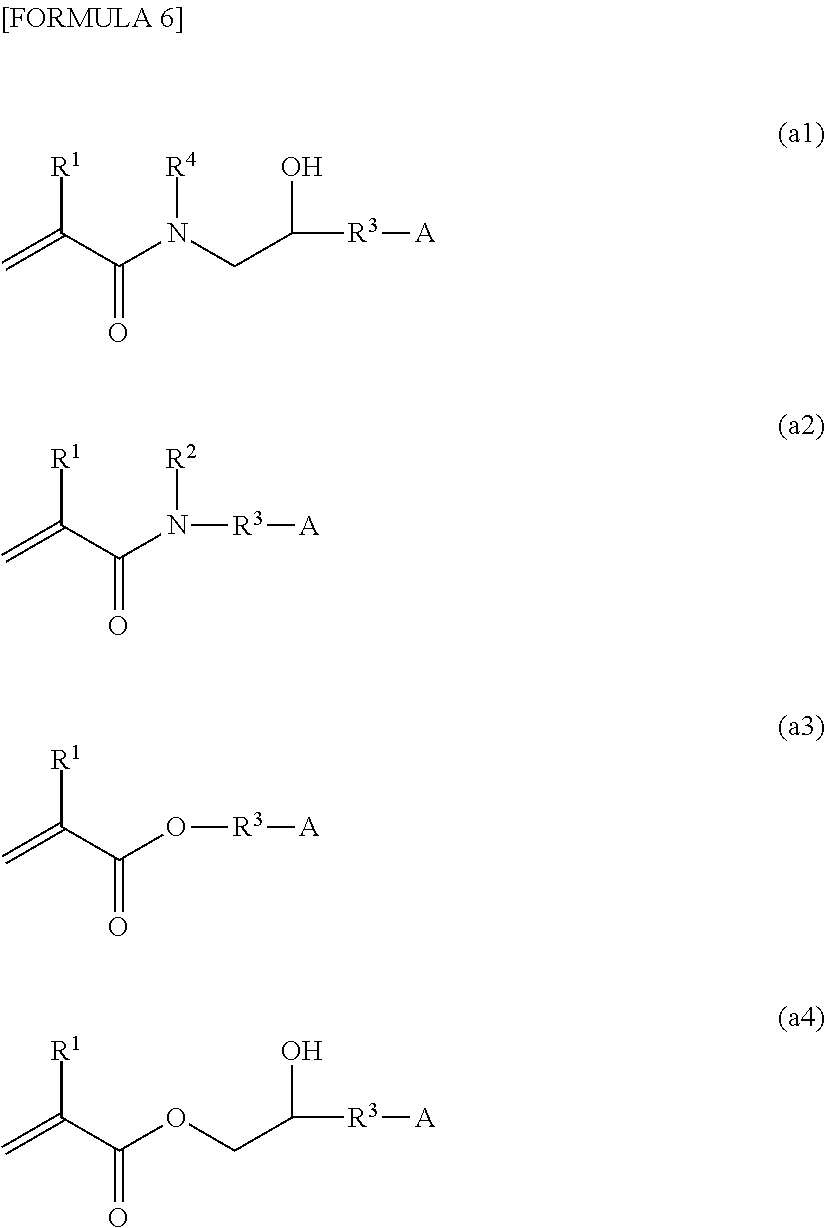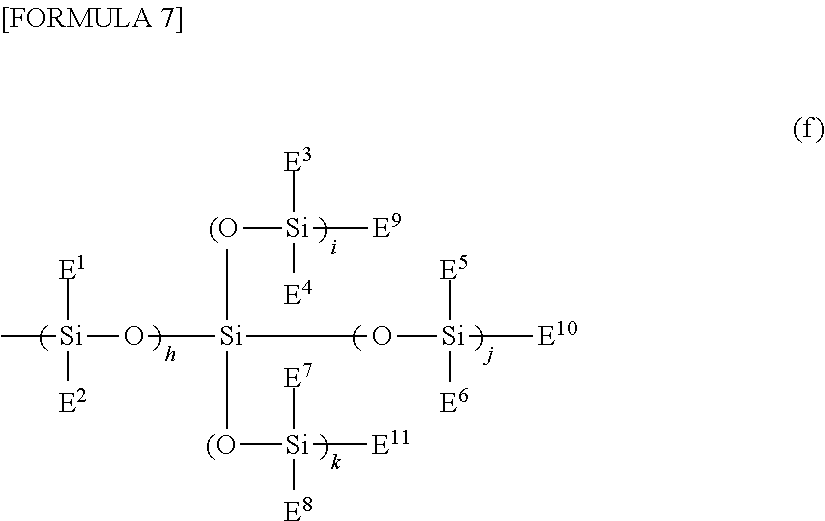Silicone hydrogel, lens for eye and contact lens
a technology of contact lens and silicone hydrogel, which is applied in the field of silicone hydrogel, can solve the problems of affecting the quality of contact lens, and affecting the quality of contact lens, and achieves excellent balance between moisture content, modulus, wettability and transparency. , the effect of high acrylamide monomer conten
- Summary
- Abstract
- Description
- Claims
- Application Information
AI Technical Summary
Benefits of technology
Problems solved by technology
Method used
Image
Examples
working example 1
[0102]A silicone monomer expressed by the following formula (s1)
[0103](0.925 g, 56.06 weight %), N,N-dimethyl acrylamide (0.510 g, 31.27 weight %), and non-silicone acrylamide monomer expressed by the following formula (h1)
[0104](0.017 g, 1 weight %), polyvinyl pyrrolidone (PVP K90, 0.132 g, 8 weight %), N,N′-methylene bisacrylamide (MBA, 0.018 g, 1.1 weight %), ultraviolet light absorber 2-(2′-hydroxy-5′-methacryloyloxy ethyl phenyl)-2H-benzotriazole (0.036 g, 2.22 weight %), 3-methyl-3-pentanol (3M3P, 1.350 g), and photoinitiator Irgacure 819 (0.004 g, 0.25 weight %) were blended together and mixed. The monomer blend obtained was degassed in an argon environment. The monomer blend was injected into the cavity in a transparent plastic (front curve side: Zeonor, base curve side: polypropylene) mold with a lens shape in a glove box under a nitrogen gas environment, and a lens was obtained by irradiating with light (Philips TL03, 1.6 mW / cm2, 15 minutes) to harden. The lens obtained wa...
working examples 2 through 6
[0106]Lens samples were obtained by polymerizing in a manner similar to working example 1, except that the composition was changed as shown in Table 1. The appearance, whole light transmissivity, water content, elastic modulus, and elongation of the sample obtained were as shown in Table 1.
working example 7
[0107]A lens sample was fabricated in a manner similar to working example 1, except that the monomer expressed by the following formula (h2)
[0108]was used in place of the monomer expressed by formula (h1) as the non-silicone acrylamide monomer. The appearance, whole light transmissivity, water content, elastic modulus, and elongation of the sample obtained were as shown in Table 1.
PUM
| Property | Measurement | Unit |
|---|---|---|
| weight % | aaaaa | aaaaa |
| weight % | aaaaa | aaaaa |
| weight % | aaaaa | aaaaa |
Abstract
Description
Claims
Application Information
 Login to View More
Login to View More - R&D
- Intellectual Property
- Life Sciences
- Materials
- Tech Scout
- Unparalleled Data Quality
- Higher Quality Content
- 60% Fewer Hallucinations
Browse by: Latest US Patents, China's latest patents, Technical Efficacy Thesaurus, Application Domain, Technology Topic, Popular Technical Reports.
© 2025 PatSnap. All rights reserved.Legal|Privacy policy|Modern Slavery Act Transparency Statement|Sitemap|About US| Contact US: help@patsnap.com



